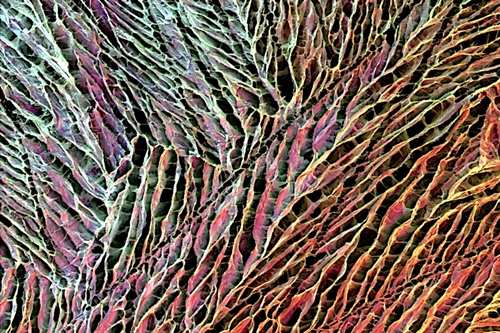26 August 2015. Biomedical engineers at Harvard University devised a hydrogel material that when infused with tumor and immune-system cells can stimulate a therapeutic immune response in lab mice. The team from Harvard’s Wyss Institute, a biomedical engineering research center, published its findings earlier this month in the journal Nature Communications (paid subscription required).
The Wyss Insitute team, led by bioengineering professor David Mooney, is seeking a simpler and more direct means of delivering cancer immunotherapy with cell transplantation, a promising type of treatment for some types of cancer that stimulates the body’s immune system to attack tumor cells. Current approaches using cell transplantation remove tumor cells from the patient, then genetically alter the cells to stimulate an immune response when placed back into the patient.
Mooney — with colleagues from Harvard, Dana-Farber Cancer Institute, University of Pittsburgh, University of Sorbonne in France, and EPFL in Switzerland — developed a more direct process that bypasses the need for genetically engineering an individual’s tumor cells. This process uses hydrogels, networks of material that contain primarily water, but maintaining enough substance to form into a three-dimensional structure. In this case, the material is formed from a frozen polymer solution that thaws into a spongy, porous hydrogel with a composition similar to soft tissue (e.g., cartilage) in the body.
By adjusting the properties of these hydrogels, called cryogels because of their frozen beginnings, the researchers devised a material that can be infused with living cells or drugs to deliver these payloads to the sites of tumors as well as other therapies. “Instead of genetically engineering the cancer cells to influence the behavior of immune cells,” says Mooney in a university statement, “we use immune-stimulating chemicals or biological molecules inserted alongside harvested cancer cells in the porous, sponge-like spaces of the cryogel vaccine.”
Because of their composition, cryogels can be compressed into an injectable form, delivered under the skin. Once delivered, drugs stimulating an immune response read the unique signature of an individual’s tumor, then recruit dendritic cells in the immune system to attack tumor cells, while at the same time breaking down the immune tolerance building up in the tumor.
In lab tests, cryogels carrying a mix of tumor cells with immunotherapy enhancement and activation factors were injected into mice induced with melanoma. The results show the cryogel injections stimulated specific and durable T-cell (immune system) responses that shrunk tumors in the mice as well as protected the mice from further tumor growth.
The researchers plan to explore the feasibility of cryogel injections with other types of cancer.
Read more:
- Antibodies to Treat Cancer Complication Licensed to Pharma
- Trial Shows Engineered T-Cells Act on Multiple Myeloma
- Magnetic Nanoparticles Found to Boost Immunotherapy
- Oxford, Ludwig Institute Launch Immunotherapy Start-Up
- Juno, Celgene Partner in $1 Billion Immunotherapy Deal
* * *


 RSS - Posts
RSS - Posts
You must be logged in to post a comment.